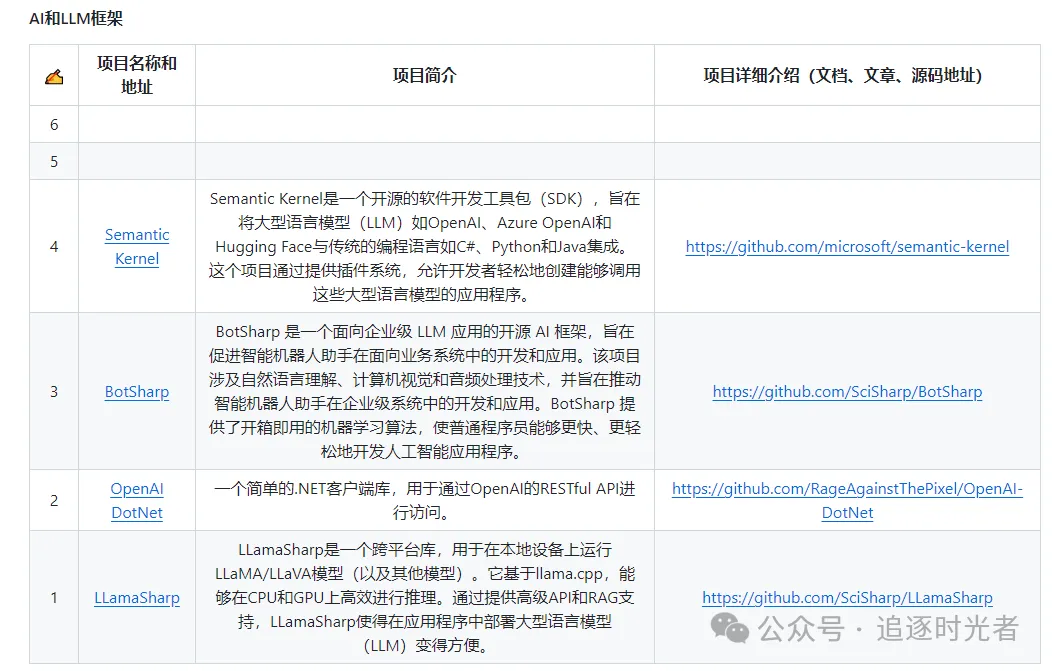"Geek Academy C# Video Tutorial" is an introductory course for the C# language. In the course, it will start from the basic concepts of the .NET platform and C#, and provide an in-depth introduction to the basic syntax, simple program logic, and Visual Studio tools of C# development. Usage techniques and implementation of commonly used algorithms. At the same time, we also hope that through course-related exercises and programming exercises, we can help students quickly get into the C# language.

Course playback address: http://www.php.cn/course/243.html
The teacher’s teaching style:
The teacher’s lectures are simple, clear, layer-by-layer analysis, interlocking, rigorous argumentation, rigorous structure, and use the logical power of thinking to attract students’ attention Strength, use reason to control the classroom teaching process. By listening to the teacher's lectures, students not only learn knowledge, but also receive thinking training, and are also influenced and influenced by the teacher's rigorous academic attitude
The more difficult point in this video is the object-oriented feature of C#:
1. Encapsulation: We can regard anything in the world as an object, so let’s take people as an example here. One person must It's an object. So what is encapsulation? Encapsulation means that when a person wants to complete a thing, he brings all the tools he needs with him, and the required technology is also installed in his mind. This can be accomplished without the help of others. What are the benefits of this? The advantage is that if I want to ask this person to complete something, I don't need to know how he completes it, nor do I need to help him complete it. As long as I know the result, it will be OK if he completes it. As for what he does first and what he does later, I don't interfere. This will help him do it faster and better, and I will save trouble myself.
1. Access permissions (visibility)
Public: (Visible everywhere) All packages and classes are visible after importing Public
Protected: (Legal inheritance) itself, The subclasses of different packages themselves,
Private: (selfish) are only visible in this class
2,
(1), attribute-->private (Private properties, public methods, no default required)
(2), method--> public protected
The written explanation is as follows: Each object contains the information it needs to operate All information, so objects do not have to rely on other objects to complete their operations.
2. Inheritance: Taking people as an example, each of us will have some common characteristics and have to do the same things. For example: Everyone has one head, two arms, and two legs. These are common characteristics. Everyone has to eat and drink water, which is the same thing they all do. So if we now want to declare many individuals, each of them will have these characteristics, then don't I have to write a lot of repeated code? So we can first create a parent class of a person. This parent class does not represent a specific person, but is just a virtual person who has all the common characteristics of people. Next time we want to instantiate a specific person, we only need to inherit this person from the "virtual person" above, and then he will have all the common characteristics of people. In this way, we don't need to write these repeated codes.
Of course, the goal of inheritance is not only to save code, but also to achieve subsequent polymorphic functions. Beginners only need to understand that inheritance can save them a lot of code, and the rest needs to be understood slowly during the project.
The written explanation is as follows: Object inheritance represents an "is-a" relationship. If two objects A and B can be described as "B is A", then it means that B can inherit from A.
Note: If A inherits B, then A not only has all the characteristics of B except the private characteristics, but A can also have its own unique characteristics. For example, in the above example, a "virtual person" inherits. In addition to having a head, two arms, and two legs, and having to eat and drink, he may also be able to program. Programming is his unique characteristic, because not everyone can program.
1,
(1), continuation: the parent class exists, the subclass has not been overridden but can be used;
(2), new: the parent class does not, New additions to subclasses
(3), rewriting: Both parent and subclasses exist, but Fred does not meet the requirements, so the subclass redefines it;
2. Example Transformation:
(1) First, parent class, then child class, first static, then member;
When instantiating, first call the static constructor of the parent class, and then call the constructor method of the parent class , and then the construction block of the subclass calls the construction method of the subclass;
(2), the empty constructor of the parent class is called by default;
3, override
(1) Rewriting and overloading:
Rewriting: In inherited subclasses, the method signatures are the same (method name + formal parameter number type order)
Visibility of subclasses;
A. Return type: basic type and void must be the same; reference type must be
B. Exception:
C. Visibility: greater than or equal to the overridden method in the parent class
3. Polymorphism: Inheritance is necessary before polymorphism. Only when multiple classes inherit the same class at the same time can there be Polymorphism is such a statement.
Let’s take human beings as an example. We have said before that everyone has to do the same thing like “eating”. The matter of "eating" is reflected in the class as a method. Because everyone has to do it, we have written this method in "virtual people", but everyone has different ways of eating, some use chopsticks and some use forks, and some want to eat rice. Pasta. So if we want to describe the eating process of different people, we have to put this process into a specific subcategory, because everyone is different. The same method can be implemented in different subclasses. This is polymorphism. Polymorphism contributes to the flexibility of the program.
Note: If the parent class method (polymorphism) is overridden in the subclass, then this method in the parent class will not be called again.
1. Benefits:
Simplifies the programming interface. It allows the reuse of some customary names between classes without having to give a new name to each newly added function.
Simplify the code
If the function/method parameter uses the type of the parent class, you can pass in the object of the parent class or the subclass
Limitations: parent class type Variables cannot directly call subclass-specific methods. It must be forced into a variable of the subclass type in order to directly call the subclass-specific method
2. Compile-time polymorphism: In fact, it is overloading, for non-virtual members. When the system is compiled, Determine what operations to implement based on different signatures.
3. Runtime polymorphism: that is, rewriting is implemented through virtual members, which means that it is not until the system is running that the operation is decided based on the actual situation.
It is easy to understand the first case. Different signatures have different implementations
The second case is implemented on the basis of inheritance, and the subclass inherits the base class At this time, by overriding the virtual members and then using the base class to reference the subclass object, then different subclass objects implement corresponding different operations.
The benefits of this are obvious. Use the base class type to define it once, then pass it in different subclass objects, and then implement different operations, which improves efficiency.
The above is the detailed content of Recommended materials for Geek Academy C# video tutorials. For more information, please follow other related articles on the PHP Chinese website!
 推荐2022年英伟达40系列显卡驱动版本Jan 02, 2024 pm 06:43 PM
推荐2022年英伟达40系列显卡驱动版本Jan 02, 2024 pm 06:43 PM英伟达4060显卡驱动版本推荐笔记本电脑上的显卡驱动版本选择一般建议选择官网推荐的版本或者最新的版本。对于IntelHDGraphics4060这款显卡,建议选择Intel官网上发布的最新驱动程序进行更新安装。具体步骤如下:《文字玩出花》是一款备受欢迎的文字解谜游戏,每天都会推出新的关卡。其中有一关名为怀旧大扫除,我们需要在图中找出12个与当时年代不符的元素。今天,我将为大家带来《文字玩出花》怀旧大扫除关卡的通关攻略,帮助还未通过的玩家们顺利过关。让我们一起来看看具体的操作步骤吧!访问Intel
 CS玩家的首选:推荐的电脑配置Jan 02, 2024 pm 04:26 PM
CS玩家的首选:推荐的电脑配置Jan 02, 2024 pm 04:26 PM1.处理器在选择电脑配置时,处理器是至关重要的组件之一。对于玩CS这样的游戏来说,处理器的性能直接影响游戏的流畅度和反应速度。推荐选择IntelCorei5或i7系列的处理器,因为它们具有强大的多核处理能力和高频率,可以轻松应对CS的高要求。2.显卡显卡是游戏性能的重要因素之一。对于射击游戏如CS而言,显卡的性能直接影响游戏画面的清晰度和流畅度。建议选择NVIDIAGeForceGTX系列或AMDRadeonRX系列的显卡,它们具备出色的图形处理能力和高帧率输出,能够提供更好的游戏体验3.内存电
 游戏中打击噪音减少的键盘推荐Jan 05, 2024 am 10:36 AM
游戏中打击噪音减少的键盘推荐Jan 05, 2024 am 10:36 AM去推荐静音游戏键盘如果你想在游戏中享受安静的体验,可以考虑购买一款静音游戏键盘。推荐的产品有CherryMXSilent、LogitechG915和SteelSeriesApexPro等。这些键盘都具有低噪音的特点,操作轻便且响应迅速。此外,建议选择具有可调节背光亮度、可编程功能和舒适手感等特点的键盘,以满足更好的使用需求。公认最静音的键盘《杜伽K320》是一款备受喜爱的电子产品。它以其出色的性能和功能而闻名,是许多人心目中的理想之选。无论是游戏、娱乐还是办公,杜伽K320都能提供出色的表现。它
 广联达软件电脑配置推荐;广联达软件对电脑的配置要求Jan 01, 2024 pm 12:52 PM
广联达软件电脑配置推荐;广联达软件对电脑的配置要求Jan 01, 2024 pm 12:52 PM广联达软件是一家专注于建筑信息化领域的软件公司,其产品被广泛应用于建筑设计、施工、运营等各个环节。由于广联达软件功能复杂、数据量大,对电脑的配置要求较高。本文将从多个方面详细阐述广联达软件的电脑配置推荐,以帮助读者选择适合的电脑配置处理器广联达软件在进行建筑设计、模拟等操作时,需要进行大量的数据计算和处理,因此对处理器的要求较高。推荐选择多核心、高主频的处理器,如英特尔i7系列或AMDRyzen系列。这些处理器具有较强的计算能力和多线程处理能力,能够更好地满足广联达软件的需求。内存内存是影响计算
 地理信息科学专业学生应选择哪种电脑Jan 13, 2024 am 08:00 AM
地理信息科学专业学生应选择哪种电脑Jan 13, 2024 am 08:00 AM推荐适合地理信息科学专业学生用的电脑1.推荐2.地理信息科学专业学生需要处理大量的地理数据和进行复杂的地理信息分析,因此需要一台性能较强的电脑。一台配置高的电脑可以提供更快的处理速度和更大的存储空间,能够更好地满足专业需求。3.推荐选择一台配备高性能处理器和大容量内存的电脑,这样可以提高数据处理和分析的效率。此外,选择一台具备较大存储空间和高分辨率显示屏的电脑也能更好地展示地理数据和结果。另外,考虑到地理信息科学专业学生可能需要进行地理信息系统(GIS)软件的开发和编程,选择一台支持较好的图形处
 分享几个.NET开源的AI和LLM相关项目框架May 06, 2024 pm 04:43 PM
分享几个.NET开源的AI和LLM相关项目框架May 06, 2024 pm 04:43 PM当今人工智能(AI)技术的发展如火如荼,它们在各个领域都展现出了巨大的潜力和影响力。今天大姚给大家分享4个.NET开源的AI模型LLM相关的项目框架,希望能为大家提供一些参考。https://github.com/YSGStudyHards/DotNetGuide/blob/main/docs/DotNet/DotNetProjectPicks.mdSemanticKernelSemanticKernel是一种开源的软件开发工具包(SDK),旨在将大型语言模型(LLM)如OpenAI、Azure
 PHP爬虫类库推荐:如何选择最适合的工具?Aug 07, 2023 am 10:42 AM
PHP爬虫类库推荐:如何选择最适合的工具?Aug 07, 2023 am 10:42 AMPHP爬虫类库推荐:如何选择最适合的工具?在互联网时代,信息爆炸性增长使得获取数据变得非常重要。而爬虫就是一种非常重要的工具,它可以自动化地从互联网上获取数据并进行处理。在PHP开发中,选择一个适合的爬虫类库是非常关键的。本文将介绍几个常用的PHP爬虫类库,并提供相应的代码示例,帮助读者选择最适合的工具。GoutteGoutte是一个使用PHP进行网页抓取的


Hot AI Tools

Undresser.AI Undress
AI-powered app for creating realistic nude photos

AI Clothes Remover
Online AI tool for removing clothes from photos.

Undress AI Tool
Undress images for free

Clothoff.io
AI clothes remover

AI Hentai Generator
Generate AI Hentai for free.

Hot Article

Hot Tools

Dreamweaver Mac version
Visual web development tools

VSCode Windows 64-bit Download
A free and powerful IDE editor launched by Microsoft

MinGW - Minimalist GNU for Windows
This project is in the process of being migrated to osdn.net/projects/mingw, you can continue to follow us there. MinGW: A native Windows port of the GNU Compiler Collection (GCC), freely distributable import libraries and header files for building native Windows applications; includes extensions to the MSVC runtime to support C99 functionality. All MinGW software can run on 64-bit Windows platforms.

PhpStorm Mac version
The latest (2018.2.1) professional PHP integrated development tool

SAP NetWeaver Server Adapter for Eclipse
Integrate Eclipse with SAP NetWeaver application server.







